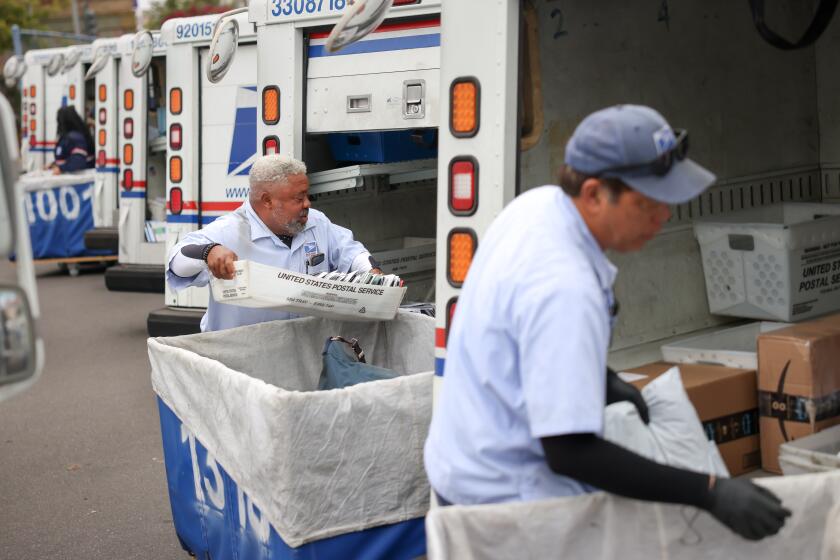Panel approves new district boundaries for L.A. school board
- Share via
Los Angeles Board of Education districts would remain largely the same under a new proposed map, except for one area that was created to increase the likelihood of a third Latino board member.
The panel charged with drawing proposed districts for the seven-member school board approved its final report this week; the issue now goes before a City Council committee.
The effort, however, was not without controversy. The L.A. Unified Redistricting Commission voted 12 to 3 to support the final report.
FOR THE RECORD:
School board redistricting: The headline on an earlier version of this online article said the Los Angeles Board of Education had backed a proposal for new district boundaries for school board members. In fact, as the story states, the approval came from the L.A. Unified Redistricting Commission, not the Board of Education.
The dissenting commissioners wrote a second report, which describes the process as marred by politics and disorganization, and urged the City Council to reject the submitted map. The commisioners contend that the panel did not conduct enough public outreach, rushed the process and created a map that does not reflect the comments expressed during public hearings.
The proposed map will be considered by the City Council’s Rules and Elections Committee, which can redraw or submit a new map to the City Council for approval if it so chooses.
The commission is convened every 10 years to adjust school board district boundaries to reflect changes in population levels and ethnic makeup. It is aimed at ensuring that Latinos, African Americans and members of other groups denied representation in the past have an adequate opportunity to win a seat, as required under the federal Voting Rights Act.
Under the new map, Bennett Kayser’s District 5 would have the most changes. It would retain two large geographic chunks — a northern portion including Eagle Rock, Silver Lake and East Hollywood and a southern portion including Vernon, Maywood and South Gate. But instead of being connected on the eastern edge, the new district would snake through portions of South L.A., Arlington Heights and Pico-Union.
Kayser said the map would cut off Marshall High School in Los Feliz from almost all its feeder schools, split the Atwater Village neighborhood between two districts and remove areas near the Los Angeles River, where Kayser hoped to develop a science center for nearby students.
“The districts are not compact; they don’t respect neighborhood boundaries, don’t recognize communities of interests or high school service areas,” he said.
The goal was to create another strong Latino district for the board, commission members said. Under the new lines, 71% of the district’s U.S. citizens are Latinos who are old enough to vote.
The Mexican American Legal Defense and Education Fund, however, contends that although voting age population figures make it a Latino district, there is low voter turnout in the southeast cities. By pairing those areas with neighborhoods such as Silver Lake, which typically has higher turnout, it dilutes their ability to elect candidates of their choice, said Steven Ochoa, the national redistricting coordinator for the Los Angeles-based organization.
“At best, it disenfranchises the southeast cities,” Ochoa said. “And at worst, it actually creates less of an opportunity for the community to elect a candidate of choice.”
Other board districts are affected in smaller ways. District 3, represented by Tamar Galatzan, would lose parts of Van Nuys and Reseda to District 6, represented by Nury Martinez. Galatzan would also lose Studio City and Toluca Lake to District 4, represented by Steve Zimmer. District 2, represented by school board President Monica Garcia, would extend into Koreatown and East Los Angeles.
Local parent activist Lydia Grant said many parents were unaware that the process was underway, let alone when or where to attend a meeting.
“Decisions are being made, and people truly didn’t have a voice,” she said.
Douglas Wance, the executive director of the commission, said the panel spent about $150,000 of its $620,000 budget on community outreach and held 13 public meetings.
“Not everyone is going to be happy when you are trying to contact 6.5 million people,” he said.
More to Read
Sign up for Essential California
The most important California stories and recommendations in your inbox every morning.
You may occasionally receive promotional content from the Los Angeles Times.











